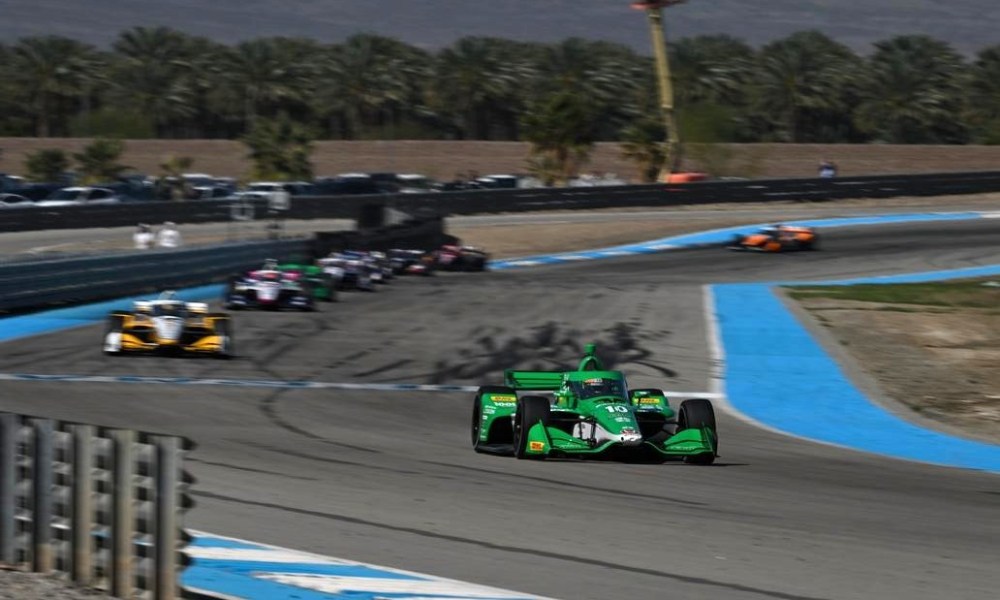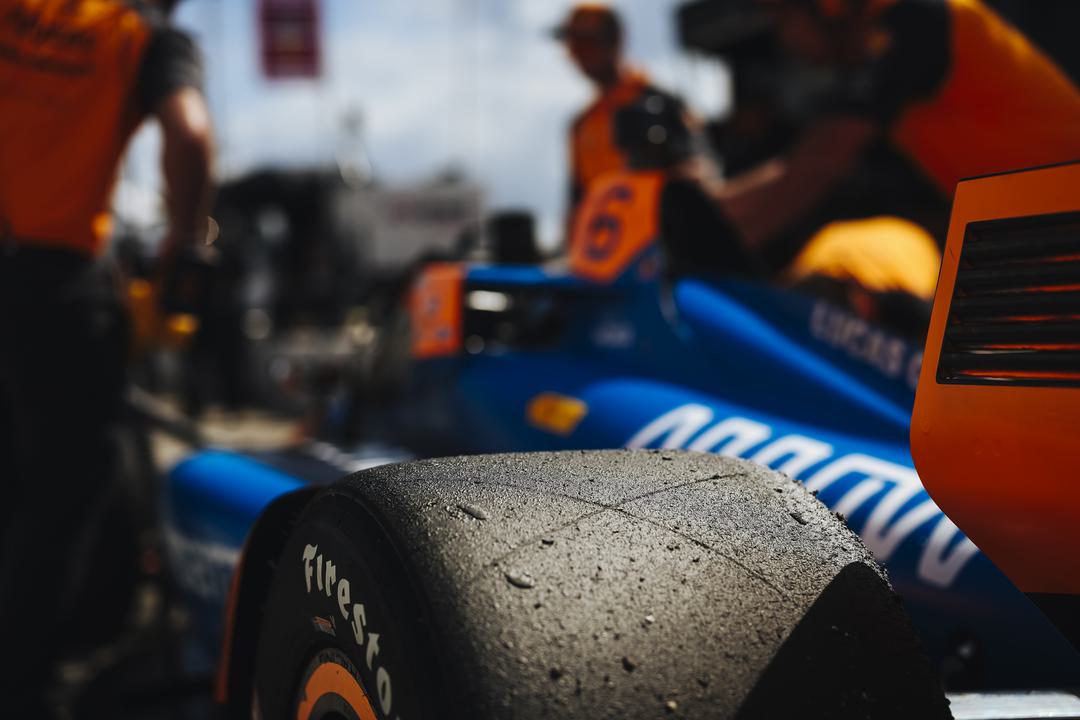
Tire Strategy Expected to Dominate at Thermal Club $1M IndyCar Challenge
Tire management and strategic decision-making will be crucial at the upcoming 65-lap IndyCar Grand Prix at The Thermal Club. The race's outcome will likely be determined more by pit lane calls and tire conservation than outright speed.

Alex Palou's green IndyCar at Thermal
Key factors affecting the race:
- 3.067-mile layout with frequent turns
- Abrasive track surface accelerating tire wear
- New hybrid powertrain adding 105 lbs to cars
- Expected high temperatures reaching 89 degrees
- Six sets of harder primary tires and four sets of softer alternates per car
Drivers must focus on maintaining consistent lap times rather than pushing for maximum speed. Last year's non-championship event showed significant tire degradation, with lap times intentionally several seconds slower than qualifying pace.

IndyCar Firestone racing tire
Track position will be crucial due to limited passing opportunities. Teams expect a three-stop race with stints potentially extending beyond 15 laps. The combination of the heavier hybrid cars and new tire compounds presents significant setup challenges.
Arrow McLaren's Pato O'Ward emphasizes that strategy will heavily influence results, while defending champion Alex Palou notes the uncertainties surrounding tire management with the new setup. Success will likely come to those who can best preserve their primary tires while maintaining competitive pace throughout each stint.
Building on lessons from St. Petersburg's season opener, teams will likely minimize time on the shorter-life alternate tires and focus on maximizing the durability of the primary compound. The winning strategy will balance conservative tire management with maintaining track position throughout the 65-lap distance.
